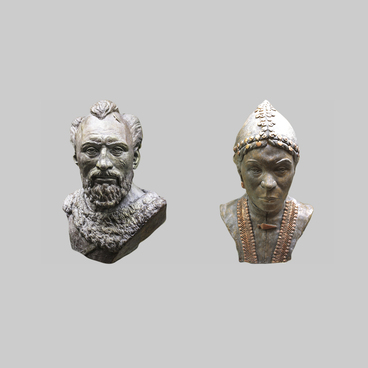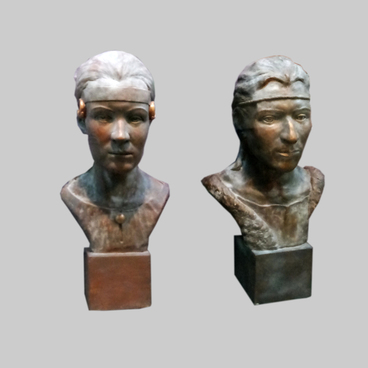The eight-arch mirror has a round shape and a spherical eyelet on the back for tying. The opposite side is decorated with an eight-pointed star with a four-petal flower in the center. The star is placed inside four circles. The symbols inside its rays are probably zodiac signs or hieroglyphs. The third circle features small discs located opposite each ray of the star. The mirror is slightly curved and has a Y-shaped crack along its surface.
The mirror was discovered by archaeologists led by Sergei Botalov in a burial ground near the village of Malkovo in 1993. According to the ChelyAbinsk archaeologist Ilya LyubchAnsky, it is an imitation of the Chinese mirrors of the Han dynasty era, although it was originally believed to have been made in China.
The remains found in the burial chamber along with the mirror probably belonged to a woman. Two vessels were placed at her head and feet. Archaeologists found 14-faced glass and chalcedony beads and jewelry made of silver overlays in the area of her chest and head. A dome-shaped bronze overlay was found by the right shoulder, and a boat-shaped silver earring lay to the left of the skull. Remains of a horse tack were discovered under the burial chamber’s rear wall, and a bronze mirror and pivot scissors were found in its southeastern corner.
On the territory of the former USSR, mirrors like the one found in Malkovo are discovered mainly at the archaeological sites of Siberia and Central Asia. They have a very large chronological range. Mirrors of this type have been found at Hunnic sites dating back to the turn of the Common Era. The Istyatsky hoard, which dates back to the 2nd century BC, contained two similar objects. The biggest number of mirrors, however, has been discovered at the burial grounds of Central Asia dating back to the period between the turn of the millennium and the 4th century AD. Researchers unanimously note that such mirrors were of great value for that time. They were treasured. Apart from intact mirrors, fragments that had been used as amulets have also survived. This explains the presence of this type of mirrors at more recent archaeological sites.
For example, similar items have been found in the 13th century layer during the excavations at the site of the ancient Mongolian capital, Karakorum.
The mirror was discovered by archaeologists led by Sergei Botalov in a burial ground near the village of Malkovo in 1993. According to the ChelyAbinsk archaeologist Ilya LyubchAnsky, it is an imitation of the Chinese mirrors of the Han dynasty era, although it was originally believed to have been made in China.
The remains found in the burial chamber along with the mirror probably belonged to a woman. Two vessels were placed at her head and feet. Archaeologists found 14-faced glass and chalcedony beads and jewelry made of silver overlays in the area of her chest and head. A dome-shaped bronze overlay was found by the right shoulder, and a boat-shaped silver earring lay to the left of the skull. Remains of a horse tack were discovered under the burial chamber’s rear wall, and a bronze mirror and pivot scissors were found in its southeastern corner.
On the territory of the former USSR, mirrors like the one found in Malkovo are discovered mainly at the archaeological sites of Siberia and Central Asia. They have a very large chronological range. Mirrors of this type have been found at Hunnic sites dating back to the turn of the Common Era. The Istyatsky hoard, which dates back to the 2nd century BC, contained two similar objects. The biggest number of mirrors, however, has been discovered at the burial grounds of Central Asia dating back to the period between the turn of the millennium and the 4th century AD. Researchers unanimously note that such mirrors were of great value for that time. They were treasured. Apart from intact mirrors, fragments that had been used as amulets have also survived. This explains the presence of this type of mirrors at more recent archaeological sites.
For example, similar items have been found in the 13th century layer during the excavations at the site of the ancient Mongolian capital, Karakorum.



